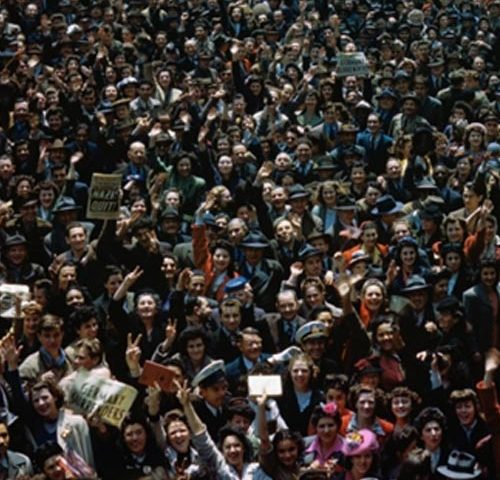Remembering Victory in Europe Day (V-E)

Kate Smith-The First Lady of Radio
May 5, 2017
Military Spouse Appreciation Day
May 12, 2017I had no idea how significant the dates of May 8th and May 9th are to WWII history. Seventy-two years ago, people all over the world were celebrating the end of the war in Europe as Germany finally agreed to an unconditional surrender. The surrender documents, signed at General Dwight D. Eisenhower’s headquarters in Reims, France, stated that the hostilities would end and the conditions would go into effect at 12:01 am on May 9, 1945 which was 9:01 am, May 8 in Washington, DC. A separate German surrender to Russia was also signed at Karlshorst near Berlin on May 8, 1945.
Both of these days are now officially recognized as the end of the Nazi regime and the war in the Europe. President Harry Truman declared that May 9 would be observed as V-E Day, but it was eventually changed to May 8. In Russia, May 9 is their national holiday known as Victory Day. It both commemorates the end of the war in USSR and honors the more than twenty million Soviet people who died.
Yes, the war was officially over and there were many enthusiastic displays of banners, flags and jubilation throughout the U.S. and the European countries. But President Truman was cautious that day in his enthusiasm as he was mindful that we were still engaged in a very serious conflict in the Pacific. After his announcement on the 8th, he also designated the following Sunday, Mother’s Day, as a day of prayer and thanksgiving. His words that day were a powerful reminder of both the past sacrifices families had made and the present task at hand.
“Our rejoicing is sobered and subdued by a supreme consciousness of the terrible price we have paid to rid the world of Hitler and his evil band. Let us not forget, my fellow Americans, the sorrow and the heartache which today abide in the homes of so many of our neighbors—neighbors whose most priceless possession has been rendered as a sacrifice to redeem our liberty … If I could give you a single watchword for the coming months, that word is work, work, and more work. We must work to finish the war. Our victory is only half over.” Fortunately, three months later, total victory was achieved.
So what does V-E Day mean for us today. In 1945 it signified the end of the war, the demise of the Nazis power and their grave threat to our freedom. Yet while the memory of those times has faded for the dwindling number of those most directly affected, that day still holds a message for us in 2017. It is a vivid reminder of the destruction, pain and loss that occurs when conflicts and power struggles cannot be peacefully resolved. We each still have a role to play as we explore how we can be peacemakers in both large and small ways.
As I was further researching V-E and Victory Day events, I discovered additional recognition given to these dates through the United Nations. On November 22, 2004, a resolution was passed by the General Assembly to pay tribute to those who died in WWII. It called upon invited member states, United Nations bodies, nongovernmental organizations and individuals to annually observe these days as a time of remembrance and reconciliation.
Who will be officially celebrating this day this year? For France and many other European countries, it is a national holiday. In France it is celebrated with parades, colorful displays of their red, white and blue flag, military fly-overs, memorial wreaths, and of course food and wine.
May those European displays of gratitude travel across the pond and inspire us to remember our families whose bravery and sacrifice contributed to that WWII victory.

